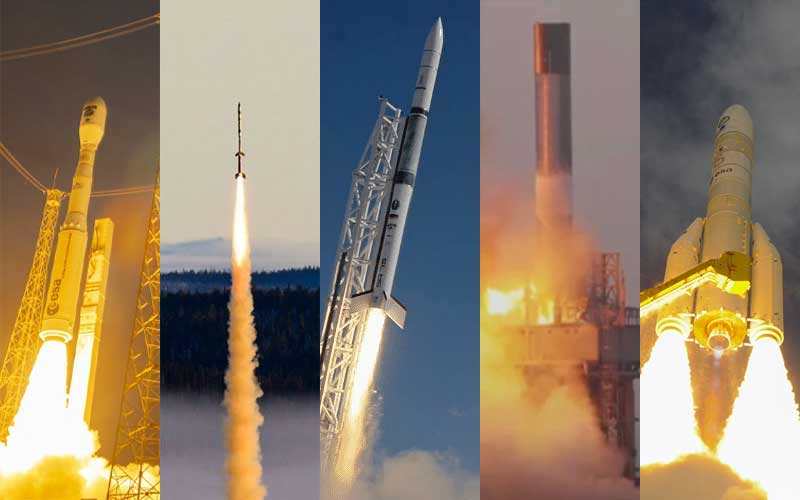
Another year without a first orbital flight aboard a commercially developed European rocket. That being said, 2024 was, nonetheless, a significant year for European launch companies. The two most notable achievements were the return of the Vega C rocket to operational flight and the inaugural flight of the Ariane 6 rocket.
As with last year, the European Spaceflight ranking of European launch companies is a subjective exercise. While factors like total launches, success rates, development milestones, and funding are always considered, some level of subjectivity is inevitable when creating a list like this. It’s also important to note that the rankings are based solely on each company’s performance in 2024, without factoring in their past achievements or future potential. Should you disagree with any of my rankings, you’re free to come after me on Twitter.
1. Avio (+2)
Avio closed out 2023 under a cloud of uncertainty. The company had failed to recertify the Zefiro 40 second stage of its Vega C rocket, delaying its return to flight. Additionally, a pair of lost propellant tanks had put the final flight of the original Vega rocket in doubt. The only flight that the company did manage aboard the penultimate Vega launch resulted in two of the mission’s secondary payloads failing to be deployed and burning up in the atmosphere along with the rocket’s AVUM upper stage. With all this hanging over the company, I boldly proclaimed in last year’s edition that “Avio’s days at the top of this list are likely numbered.” I was wrong.
2024 was Avio’s year. The company completed a redesign of the Zefiro 40 nozzle, conducted two requalification tests, and successfully returned Vega C to flight carrying the Sentinel-1C to orbit. Avio also managed to pull together a Frankenstein’s monster of an AVUM upper stage, replacing the lost propellant tanks with larger tanks from a cannibalised Vega C AVUM+ upper stage. This allowed the company to complete the final launch of the original Vega rocket, deploying the Sentinel-2C satellite into orbit. Successfully completing both launches in the same year, despite the overwhelming odds, is a pretty astonishing achievement.
In addition to what the company has achieved on the launchpad, it has also been successful in securing its future. Earlier this month, ESA awarded Avio €350 million to increase the annual launch cadence of Vega C and to complete the development of its next-gen Vega E rocket. The company also announced several defence contracts and the planned opening of a solid rocket motor production facility in the US to fulfill some of those contracts. This has allowed the company to boost its revenue from its defence arm, reducing its dependence on what promises to be an increasingly competitive launch sector.
2. ArianeGroup (-1)
An Ariane rocket was launched for the first time on Christmas Eve in 1979. Since then, Europe has managed to maintain constant sovereign access to space through five different Ariane rockets, from Ariane 1 to Ariane 5. That all changed with Ariane 6. When the final flight of Ariane 5 was launched on 5 July 2023, Ariane 6 had yet to be launched on its inaugural trip to space. This represented what ESA Director General Josef Aschbacher referred to as a “crisis!”
On 9 July 2024, a little over a year after the retirement of Ariane 5, Ariane 6 finally, after years of delays, took to the skies for its inaugural flight, carrying a selection of small payloads. This launch was, however, not without incident. While the rocket managed to avoid the fate of the inaugural Ariane 5 flight, which ended in rapid unscheduled disassembly shortly after takeoff, the rocket’s upper stage failed to ignite for its deorbit burn, stranding the stage in orbit with a pair of reentry capsules still attached.
In addition to the rocket failing to meet all pre-flight expectations, Arianespace, the rocket’s commercial operator, was forced to delay the second flight of Ariane 6 from late 2024 to early 2025. While the delay is unlikely to significantly impact Ariane 6’s long-term future, it represents another dent in the launcher’s reputation. This is particularly glaring given then-Arianespace CEO Stéphane Israël’s categorical statement shortly after the rocket’s first flight that the company was “perfectly on track” to complete a second Ariane 6 flight in 2024.
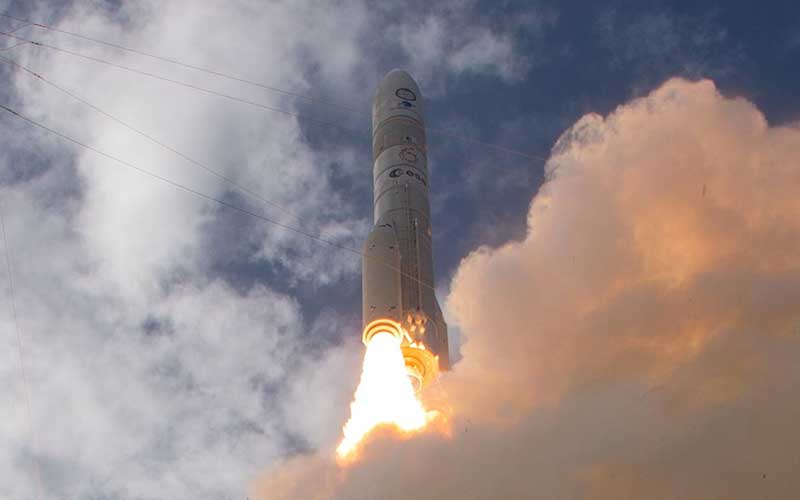
3. Isar Aerospace (+2)
Despite stating that it would be attempting an inaugural flight of its Spectrum rocket before the end of the year, Isar Aerospace has not managed to do so. The company announced that it had begun testing at Andoya Spaceport in Norway, and Andoya’s closure notices back that up. However, the last closure period announced by the spaceport covered up until November 26. Since Isar Aerospace does not offer any live streams of its testing and its press representatives aren’t sharing any new information, it’s difficult to be sure about the status of the company’s inaugural flight. What is clear is that Isar is the European launch startup company nearest to a maiden flight of a rocket capable of delivering payloads into orbit. Rocket Factory Augsburg looked sure to take that title, but alas, that wasn’t to be.
In addition to its success in reaching the launch pad, Isar has also had a successful year of fundraising. In June, the company extended its $165 million Series C funding round with an additional €65 million. Earlier that same month, the company secured $20 million in growth debt from California-based ATEL Ventures. In November, the company received €15 million through the European Space Agency’s Boost! Programme. Finally, in December, the German government committed to deploying €95 million to Isar Aerospace, Rocket Factory Augsburg, and HyImpulse. If the €95 million is distributed equally, Isar will have ended 2024 having raised a little over €130 million, which is more than most European launch startups have raised altogether.
Isar is well-financed and closing in on its inaugural flight, which is the reason it has secured third on the list. However, an undisclosed issue behind the halted testing in November could very well have pushed the company lower on this list.
4. Bayern-Chemie (New)
In 2020, the German aerospace agency DLR commissioned Bayern-Chemie, an MBDA subsidiary, to develop a new solid-fuel rocket stage for use aboard sounding rockets. The primary aim of the project was to enable the launch of heavier payloads than the current suite of sounding rockets utilized by DLR could handle. Bayern-Chemie produced the Red Kite stage, which completed an inaugural test flight in 2023. According to Bayern-Chemie, Red Kite is the largest solid-fuel rocket motor ever built in Germany. It is capable of carrying payloads of more than 400 kilograms to altitudes above 250 kilometres.
In 2024, DLR began regular operational flights of the stage with two missions being launched over 12 months. The first was a joint mission executed by DLR and ESA in February that carried seven experiments and a “shared module” that housed another seven small experiments. The mission used a Red Kite booster fitted with an Improved Malemute upper stage, which is derived from military surplus and converted for civilian use by Bayern-Chemie. In November, another Red Kite booster with an Improved Malemute upper stage was launched as the 600th mission to lift off from Esrange Space Center in Sweden. The rocket carried 21 individual payloads and reached a maximum altitude of 309 kilometres, allowing for seven minutes of microgravity.
This is not a rocket programme that makes headlines. Very often, these missions aren’t promoted much at all outside the circles following DLR, the agency’s MORABA team, which manages the launches, and the various customers whose payloads have been launched aboard them. The programme has, however, been incredibly successful, with the delivery of a booster and the commencement of operational flights in a little over four years. Bayern-Chemie is, as a result, a worthy holder of the number four spot.
5. HyImpulse (+2)
On 3 May, HyImpulse launched the inaugural flight of its suborbital SR75 single-stage hybrid rocket from the Southern Launch Koonibba Test Range in Australia. The flight, which was called “Light This Candle,” saw the rocket reach a maximum altitude of around 50 kilometres. In addition to validating the suborbital launch system, the mission also flight-tested the same hybrid rocket motor that will be utilized aboard the company’s larger SL1 rocket. This larger rocket will be capable of deploying payloads of up to 600 kilograms to low Earth orbit. HyImpulse has stated that the inaugural flight of its SL1 rocket is expected to take place by the end of 2025.
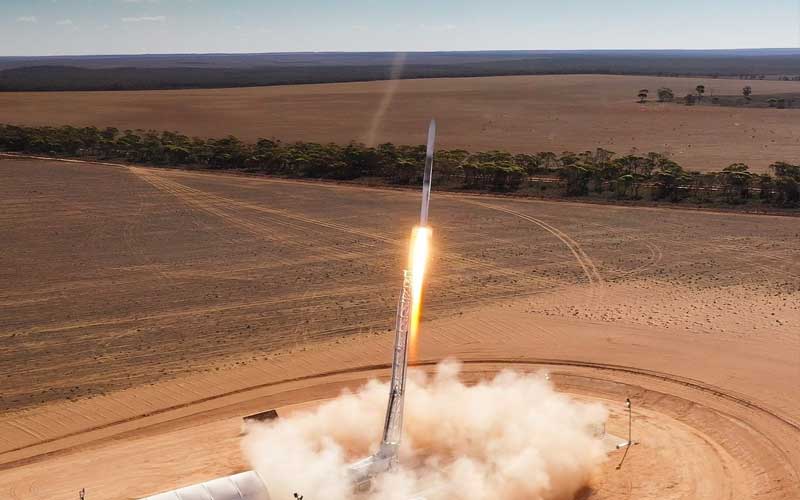
In addition to its exploits in Australia, the company also managed to secure additional funding in 2024. In November, the company received €11.8 million in funding through the ESA Boost! programme. HyImpulse was also among the three rocket companies selected by the German government to receive €95 million in additional funding. If the €95 million is split equally, HyImpulse will have ended 2024 having raised a little under €43.5 million.
6. Rocket Factory Augsburg (-)
Rocket Factory Augsburg could easily have been in the running for the top three places had its inaugural RFA One launch gone as planned. Sadly, that wasn’t the case. On 19 August, the company announced that during a hot fire test of the first flight-ready RFA One first stage, a fire broke out, leading to the destruction of the stage. The loss of the stage scuttled any hopes that the company would be able to complete a launch attempt in 2024.
Despite the failure, it can’t be underestimated how significant it is that the company was able to complete all elements of its first rocket and be in a position where it was potentially days away from a launch attempt. It will have been a blow to the company’s financial position, though. RFA will need to spend the capital to build a new stage, which includes nine of the company’s Helix rocket engines.
In terms of its financial position, RFA managed to tackle that in 2024. In November, it was revealed that the company had secured €11.8 million in funding through the ESA Boost! programme. Additionally, RFA was among three rocket companies selected by the German government in December to receive a combined €95 million in funding. If the €95 million is distributed equally, RFA will have ended 2024 having raised a little under €43.5 million.
7. Łukasiewicz Institute of Aviation (New)
When new countries make it to space for the first time, it’s a moment to be celebrated. In 2024, Poland joined the list. The country’s Łukasiewicz Institute of Aviation made history on 3 July when its ILR-33 AMBER 2K rocket skimmed over the Kármán Line, reaching a maximum altitude of 101 kilometres. The rocket was launched from the Andøya Space Centre in Norway. According to the Łukasiewicz Institute of Aviation, operational flights of the rocket are expected to begin in 2025.
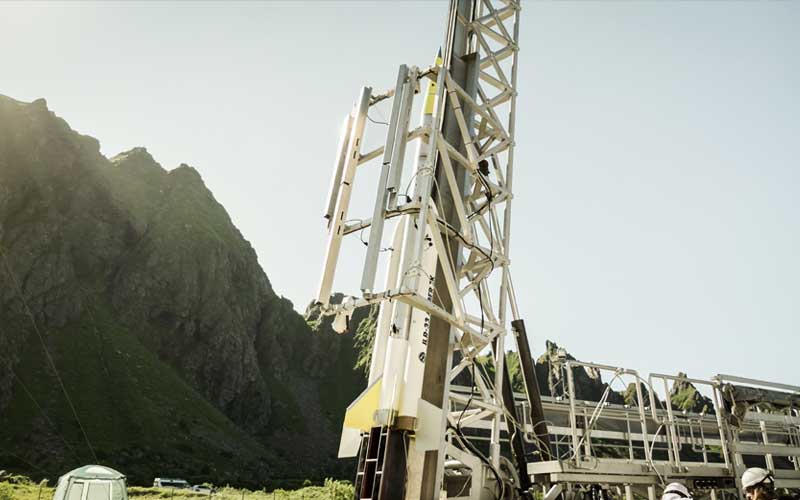
8. POLARIS Spaceplanes (New)
In February, POLARIS Spaceplanes completed its first rocket-powered roll test of its MIRA demonstrator. This was meant to be the final step before it attempted the first in-flight ignition of its in-house developed AS-1 aerospike engine. In March, an attempt to do just that was scuppered when the MIRA demonstrator crashed during takeoff. That failure would, however, not define the company’s year.
Later the same month, POLARIS announced that it had secured a “multi-million-euro investment.” By May, the company had decided to build a pair of larger MIRA demonstrators, and by July, the company had taken delivery of the MIRA II and MIRA III airframes. In October, the company announced it had secured additional funding, bringing its total funding to date to €7.1 million. In November, the company began testing MIRA II, completing an initial rocket-powered roll test. Less than a week later, the company completed the first in-flight ignition of its aerospike engine aboard its MIRA II demonstrator.
While POLARIS is likely still years away from an orbital launch attempt aboard its planned AURORA spaceplane, its incredible turnaround in 2024 makes it a worthy candidate for this list.
9. PLD Space (-7)
In 2024, PLD Space revealed its vision for what comes after Miura 5. It was a fun presentation. It does, however, mean nothing until PLD Space can actually get Miura 5 off the ground and get to a point where a future after Miura 5 is possible. In this respect, 2024 was largely about securing the funding that will be necessary for the company to do so. It has, however, bet its future to secure this funding, with the company announcing three separate loan agreements this year.
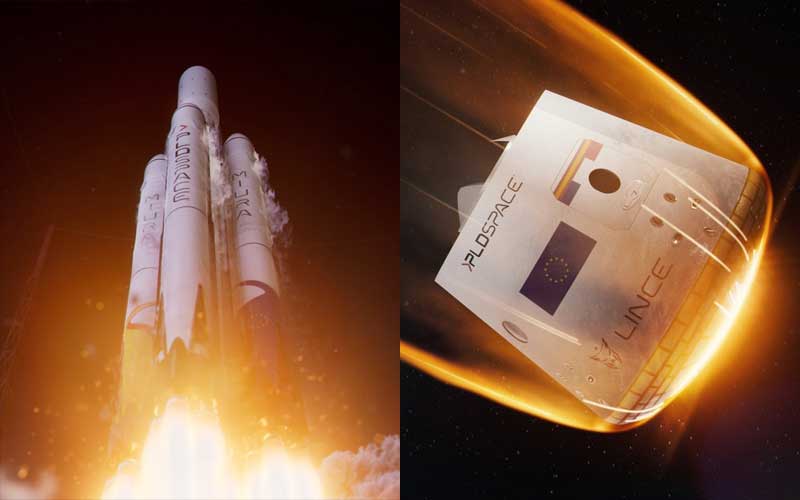
On 26 January, the Spanish government announced it had selected PLD Space to receive a €40.5 million loan to complete the development of the Miura 5 rocket. On 12 July, PLD Space revealed it had secured a €31.2 million syndicated loan from Banco Santander, EBN Banco, and the Instituto de Crédito Oficial. Finally, on 2 December, the company announced an additional €11 million loan from COFIDES, a Spanish state-owned financial institution. That’s €82.7 million in loans. The company and its partner OCCAM Space also received €1.3 million in funding in February from ESA through its Boost! programme for a Miura 5 payload adapter.
In non-financing news, PLD Space began work on its portion of the new commercial launch facility being built by CNES on the grounds of the old Diamant launch facility at the Guiana Space Centre.
10. Latitude (-1)
Latitude had a generally busy 2024 building out its Titan Research and Test Centre at the Châlons Vatry Airport in France. The company also installed its first in-house developed turbopump onto a test bench at its new testing centre. Latitude is currently proceeding with a full test campaign of the turbopump.
On 22 January, the company announced that it had closed a $30 million (€27.5 million) Series B funding round to support the development of its Zephyr rocket. In June, Latitude was awarded €15 million by the French government, through the country’s France 2030 initiative, to fund two development projects. The funding was allocated to support the internal production and industrialisation of turbopumps for Zephyr. Additionally, it will fund a project focused on validating commercial-off-the-shelf components for space applications to reduce launch costs. That’s a total of €42.5 million raised in 2024.
Another significant development from Latitude in 2024 was its leadership shakeup. In November, co-founder and CEO Stanislas Maximin transitioned to the role of executive chairman, appointing industry veteran Aurélie Bressollette as the new CEO. Bressollette brings over 20 years of experience in the European space sector, adding a strong hand to steer Latitude’s future.
11. MaiaSpace (-3)
MaiaSpace is a sleeping giant. The company is well-funded and has had much of its development work done for it, thanks to the ESA-funded Prometheus and Themis programmes being developed by ArianeGroup. This has allowed the company to progress quickly from its founding in early 2022 to preparing for the maiden flight of its Maia rocket in 2026. That being said, 2024 was a mostly uneventful year for the company.
The company began the year with an announcement that ArianeGroup would increase its total investment into MaiaSpace to €125 million. In September, it announced that it would begin hot fire testing the first Maia upper stage in 2025. Later that same month, the company received approval from CNES to repurpose the Soyuz launchpad at the Guiana Space Centre for its own use. In addition to what the company has achieved itself, milestones from ArianeGroup and its Themis programme have also moved the development of the Maia rocket along. Specifically, ArianeGroup has completed the first single-engine variant of the reusable rocket stage demonstrator and shipped it to the launch site ahead of testing.
While 2024 was a little uneventful, MaiaSpace will likely move up this list in 2025 as it completes much of its testing and inches ever closer to a maiden flight.
Orbex (Dishonourable mention)
For Orbex, 2024 will be known as the year it abandoned Sutherland Spaceport, breaking its promise to investors, institutions, and, possibly most importantly, local communities. The company stated that it would “pause” construction and shift away from Sutherland to SaxaVord, allowing it to free up funding that would be used to develop a new medium-lift rocket called Proxima. Let’s examine that.
In November 2022, when Orbex announced that it would be taking over the construction of Sutherland, it revealed that it would invest £20 million into the project over three years. Even if not a single cent of that £20 million has been spent, it’s a far cry from the hundreds of millions it will likely need to develop a medium-lift rocket. As an excuse, this one is razor-thin, bordering on the absurd. I may have a shred of respect for the company’s leadership if they had come out and apologised for what was likely a mistake in ever taking on the development of its launch facility. Instead, they obfuscated, leaving a community in limbo. Orbex is, as a result, a worthy winner of the first-ever dishonourable mention.
Honourable mentions
I couldn’t mention everyone on this list, but there are notable absences.
HyPrSpace reached a number of key milestones with the completion of one hot fire test campaign and the launch of another for its Terminator stage prototype. Sirius Space completed a hot fire test campaign of its STAR-1 rocket engine and secured a launch pad in Australia. And Italy’s Sidereus Space Dynamics managed to complete the first integrated system test of its diminutive EOS rocket. All of these companies will be on my radar in 2025.




